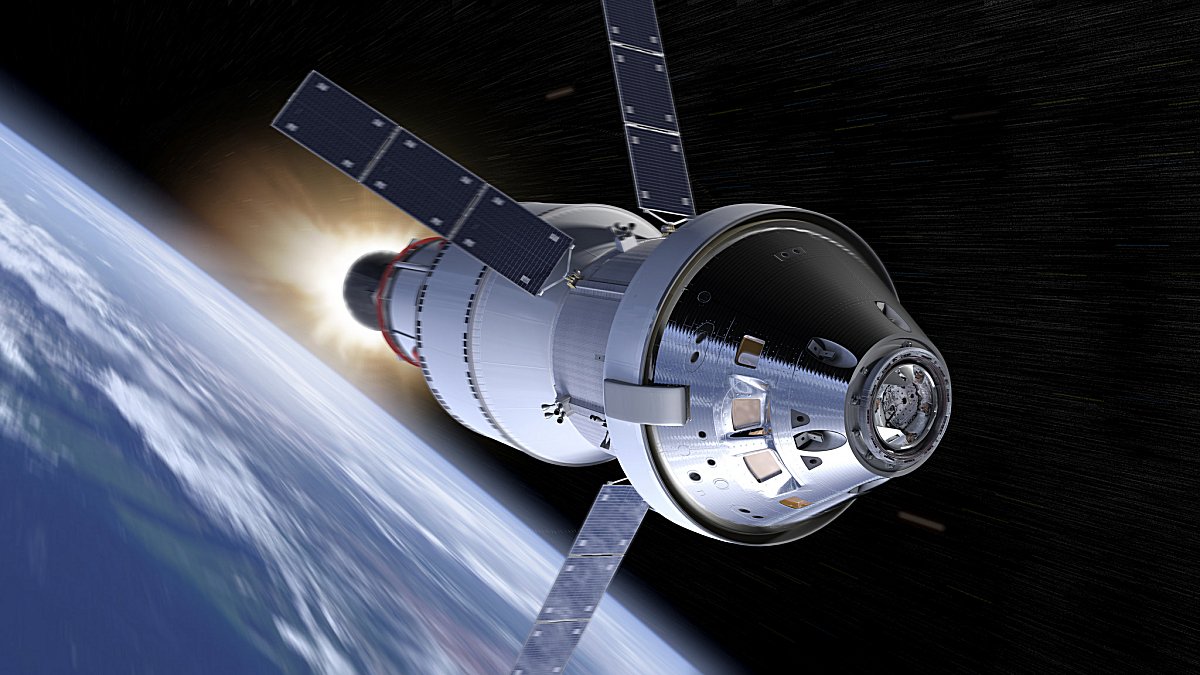MessageToEagle.com – NASA is hard at work building the Orion spacecraft, Space Launch System (SLS) rocket and the ground systems needed to send astronauts into deep space. The agency is developing the core capabilities needed to enable the journey to Mars.
Orion’s first flight atop the SLS will not have humans aboard, but it paves the way for future missions with astronauts. Ultimately, it will help NASA prepare for missions to the Red Planet.
During this flight, currently designated Exploration Mission-1 (EM-1), the spacecraft will travel thousands of miles beyond the moon over the course of about a three-week mission.

Orion will launch on the most powerful rocket in the world and fly farther than any spacecraft built for humans has ever flown. Orion will stay in space longer than any ship for astronauts has done without docking to a space station and return home faster and hotter than ever before.
“This is a mission that truly will do what hasn’t been done and learn what isn’t known,” said Mike Sarafin, EM-1 mission manager at NASA Headquarters in Washington. “It will blaze a trail that people will follow on the next Orion flight, pushing the edges of the envelope to prepare for that mission.”
- SLS and Orion will blast off from Launch Complex 39B at NASA’s modernized spaceport at Kennedy Space Center in Florida.
- The spacecraft will deploy its solar arrays and the SLS upper stage, called the Interim Cryogenic Propulsion Stage (ICPS). This will give Orion the big push needed to leave Earth’s orbit and travel toward the moon.
- From there, Orion will separate from the ICPS. The ICPS will then deploy a number of small satellites, known as CubeSats, to perform several experiments and technology demonstrations.
- As Orion continues on its path from Earth orbit to the moon, it will be propelled by a service module provided by the European Space Agency, which will supply the spacecraft’s main propulsion system and power (as well as house air and water for astronauts on future missions).
- Orion will pass through the Van Allen radiation belts, fly past the Global Positioning System (GPS) satellite constellation and above communication satellites in Earth orbit.
- To talk with mission control in Houston, Orion will switch from NASA’s Tracking and Data Relay System satellites and, for the first time for a human spaceflight vehicle in decades, communicate through the Deep Space Network.
The outbound trip to the moon will take several days, during which time engineers will evaluate the spacecraft’s systems and, as needed, correct its trajectory.
Orion will fly about 62 miles (100 km) above the surface of the moon, and then use the moon’s gravitational force to propel Orion into a new deep retrograde, or opposite, orbit about 40,000 miles (70,000 km) from the moon.
The spacecraft will stay in that orbit for approximately six days to collect data and allow mission controllers to assess the performance of the spacecraft. During this period, Orion will travel in a direction around the moon retrograde from the direction the moon travels around Earth.
For its return trip to Earth, Orion will do another close flyby that takes the spacecraft within about 60 miles of the moon’s surface, the spacecraft will use another precisely timed engine firing of the European-provided service module in conjunction with the moon’s gravity to accelerate back toward Earth.
This maneuver will set the spacecraft on its trajectory back toward Earth to enter our planet’s atmosphere traveling at 25,000 mph (11 kilometers per second), producing temperatures of approximately 5,000 degrees Fahrenheit (2,760 degrees Celsius) – faster and hotter than Orion experienced during its 2014 flight test. The spacecraft will splashdown in the Pacific Ocean off the San Diego coast.
This first exploration mission will allow NASA to use the lunar vicinity as a proving ground to test technologies farther from Earth, and demonstrate it can get to a stable orbit in the area of space near the moon in order to support sending humans to deep space, including for the Asteroid Redirect Mission. NASA and its partners will use this proving ground to practice deep-space operations with decreasing reliance on the Earth and gaining the experience and systems necessary to make the journey to Mars a reality.
See the latest images of Orion progress – here
MessageToEagle.com
via NASA






